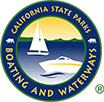The CSMW, as part of their Sediment Master Plan (SMP) is attempting to address requests of coastal regulators for sediment budget information that would assist them in their sediment management decision-making. Sediment budget information is needed at a regional scale for California’s littoral cells, including source inputs, littoral drift rates and losses or sinks along California’s approximately 1100 miles of coastline. The need is to understand sediment movement and amounts prior to human intervention and alterations within these cells (e.g. prior to dams, debris basins, coastal armoring, etc.), and to compare that information against present-day or altered sediment budgets. Graphical information is desired in a format compatible with the SMP GIS database for ease of use.
Additionally, another desired work product is a summary document that would provide the non-technical reader with a sense of littoral cells or beach compartments, how littoral budget components are determined, measured or approximated, and what assumptions or uncertainties are involved in littoral budget determinations. This document would be well illustrated in order to provide both written and graphical explanations of littoral cell functioning and budget determinations.
Project Scope of Work
DBW, on behalf of the CSMW has contracted with the University of California Santa Cruz (UCSC) and Dr. Gary Griggs to develop a final report that would include the following:
- A critical examination of often used littoral cell boundaries for the coast of California and confirmation or revision of these cell boundaries as well as possible with existing data.
- An evaluation of the long term dredging volumes from each of California’s coastal harbors and a determination of average annual rates as proxies for littoral drift rates.
- A compilation of existing data on sand sources/inputs to California’s littoral cells and comparison with the calculated dredging/littoral drift rates in order to provide a cross-check on volume consistency in the individual littoral cell budgets.
- Development of littoral sand budgets under pre-existing natural conditions of sediment input and littoral transport and also under present altered conditions.
- Field and lab work needed to determine how much sand has been cut off from littoral cells throughout California from dams, debris basins, channelization projects, and seawalls and revetments.
- A compilation all of the existing information on the components of individual littoral cells and littoral drift rates into a GIS base compatible with CSMW’s Sediment Master Plan GIS format and metadata needs.
- Preparation of a summary document that would provide the non-technical reader with a sense of the functioning and importance of littoral cells or beach compartments, how littoral budget components are determined, measured or approximated, and what assumptions or uncertainties are involved.
- Preparation of a summary white paper on the spatial and temporal (seasonal and decadal) movement of sand within littoral cells.
- Preparation of a summary white paper on the movement of sand within a littoral cell resulting from a beach nourishment project using a comprehensive beach and offshore morphology data set.
